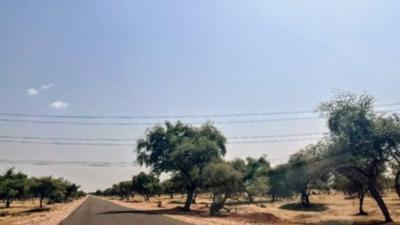Land Rights, Environmental Protection and Inclusive Development within India's Federal System
The main goal of the research project is to understand the consequences of the legal regime India has adopted to protect its indigenous peoples (so called scheduled tribes). We focus in particular on how effective it is when faced with development pressures (industrialization and economic growth) from the mainstream of Indian society, and the increasing concerns for ecology and environmental sustainability. We are also interested in how the protective laws shape social dynamics within and among tribal groups.
While tribal population across India share similar forces of marginalization from the plural majorities surrounding them, their socio-economic and cultural conditions differ between the provincial states of the Indian federation, as does the political and legal context. We investigate this through studies in four states: Gujarat, Andhra Pradesh and Telangana, where the tribal population is in minority, and the tribal areas are governed by the constitutional provisions of the ”Fifth Schedule”; and Meghalaya, the tribal majority state in India’s volatile Northeast governed under the “Sixth Schedule” of the constitution. These ‘Schedules’ are at the core of the constitutional recognition and subsequent protections adopted by the Indian state. Although the Indian republic in many ways pioneered a protective regime for the indigenous people, our central question has been to investigate why despite this the tribal people in India continue to remain the most marginalized and displaced of all groups. More than half (51%) are below the poverty line, and 65% are landless (2011 Census). Moreover, the displacement affects this section disproportionally as although constituting only 8.6% of the total population, they make up 55% of people displaced due to the construction of dams, mines, industrial development and the creation of wildlife parks and sanctuaries since independence. The tribals have thus disproportionately borne the burden of economic development.
Questions addressed by the project include:
- To what extent do the protective law shield the tribal population against outside pressures?
We find that the constitutional provisions safeguarding the land rights of tribals work only to a limited extent because they are pitted against a contrary legal regime that strengthens the powers of the state to expropriate land (for purposes of mining, dams, infrastructure etc.). While in tribal majority state of Meghalaya we question the premise of an ‘over -arching’ tribal identity that is projected as a basis for exclusive political representations; in tribal minority states of Andhra, Telangana and Gujrat we question whether political representations have been ineffective partly due to divisions across tribal communities while they pit themselves as ‘separate’ and ‘distant’ from the mainstream Indian society.
See for example our publication The CPR Land Rights Initiative report on ‘Land Acquisition in India: A Review of Supreme Court cases from 1950-2016’. This is a first comprehensive country-wide study of land acquisition disputes since India's independence, which analyses these disputes along various metrics.
The efforts at ecological regulations and its consequences thereof is discussed in this publication discussing the effects of coal mining in Meghalaya.
For more publications see:
https://thewire.in/68984/singur-turned-tides/
http://www.frontline.in/static/html/fl2919/stories/20121005291903600.htm
- Have the protective laws protected weaker groups and individuals in the tribal population or served the interest of tribal elites?
Studies of intra-community land alienations in Khasi Hills (Meghalaya) indicate that, in a context of modernization and neoliberal influences, interplays between formal and informal institutions governing land has weakened the protective nature of tribal communities and enabled elites to privatize large tracts of land. More generally, we find that dominant tribal groups often are able to capture most of the benefits to the detriment of smaller or less resourceful tribes. In tribal minority states of Andhra Pradesh, Telangana, and Gujarat, we consistently find that numerically and economically and politically more powerful tribal groups are able to corner most of the special benefits.
See our publication which discusses a microscopic study of the socio-political dynamics of community ownership and control of land in the Khasi Hills of Meghalaya and the intra community marginalisation of vulnerable groups despite protective mechanisms.
- Is there need for major reform of the protective constitutional/legal provisions? To what extent are the problems due to the laws themselves as opposed to their interpretation and implementation?
We find that India has progressive constitutional provisions, which need to be strengthened legislatively and administratively to secure their benefits to the tribals. Some of the problems are at the level of law, for instance, the expropriation laws that are used to displace tribals from the land need to be changed in a manner that gives the dispossessed a voice in the process of expropriation. However, a large extent of the problems are because of institutional conflicts within the government and between government and tribal governance institutions, as well as due to low financial allocations for the tribals.
We find that 6th Schedule States’ governments struggle to balance federal requirements and pressures from tribal power-structures. Conflicts are increasingly judicialized, leading to a tendency where the federal state and the courts pull in one direction and traditional institutions in the other, while the District Councils are rendered ineffective due to conflicting institutional jurisdictions, hence resulting in ineffective governance.
We find huge potential for improving the efficacy of existing constitutional protections, through reforming the implementing institutions (Tribal Welfare Department, Forest Department). Changes in financial allocations will also make a significant difference.
Check this space for forthcoming scholarly publications.
Also see our popular media article discussing these issues.
Also see our India research partner’s website.






